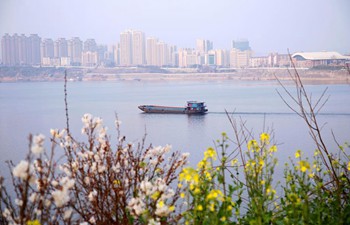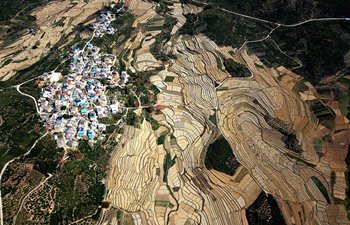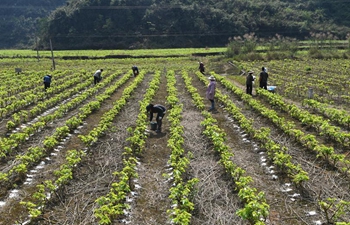WASHINGTON, March 13 (Xinhua) -- A team from University of Geneva has found that the climate change is increasing frequency of avalanches in the Western Indian Himalayas, calling for a better risk management.
The study, published on Tuesday in the Proceedings of the National Academy of Sciences, shows that avalanches became more frequent from 1970 onward compared with the years before 1970.
It occurred at rates greater than 0.87 per year during the periods 1970 to 1977 and 1989 to 2003, compared with an average of 0.24 per year over the entire history.
Juan Antonio Ballesteros-Canovas and his colleagues reconstructed the 150-year history of snow avalanches for a site in the Western Indian Himalayas using data from tree rings.
They used statistical modeling to explore the relationships between avalanche activity and monthly climate variables, finding that avalanche probabilities were significantly associated with air temperatures between December and March.
Model predictions point to an increased probability of snow avalanches toward the second half of the 20th century, which coincides with warming trends observed between December and March, as well as with an increase in accumulated precipitation totals in January and February.
"Our results confirm that ongoing climate warming has been responsible for a shift in snow avalanching on subalpine slopes in the Western Indian Himalayas in recent decades," said Ballesteros-Canovas.
According to researchers, the increasing air temperature leads to a rise in liquid water content of the snowpack and an increase in its shear deformation rate, which in turn favors increased strain at the interface of slab and weak layers, and ultimately, the release of wet snow avalanches.
"The transformation of dry snow packs into wet snow packs is decisive for the release of snow avalanches in the region, as the reconstructed increase in process activity occurred even in the absence of increased snowfall," said Ballesteros-Canovas.
Researchers call for well-coordinated actions aimed at improving risk management of snow avalanches and disaster risk policies to enhance climate change adaption in the wider study region.

















